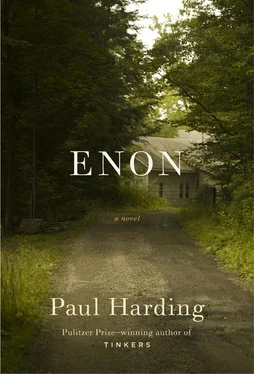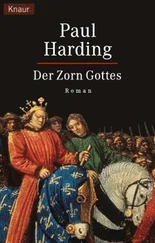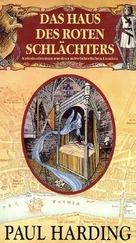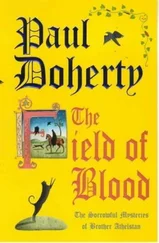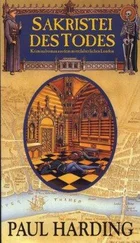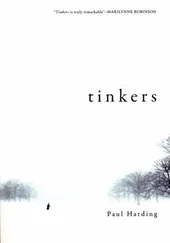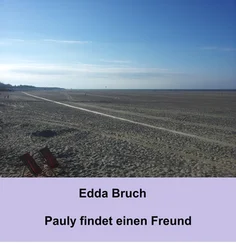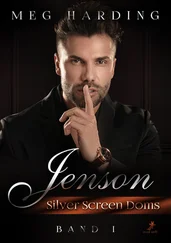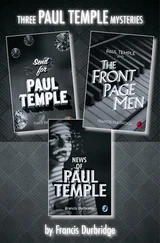I never returned to the sanctuary with my grandfather, and the experience sifted away in my mind for years, until it emerged again one afternoon when Kate was seven years old.
“Hey, Kate. I just thought of something really cool. It’s kind of a mystery, something I remember from way, way back when I was a kid.”
“What is it, Dad?”
“Well, let me just show you, okay?”
We drove to the sanctuary and I walked her down the wide grass track that ran downhill alongside the meadow, high with milkweed, and the grid of swallows’ houses until we reached the edge of the woods and entered them through a leafy archway. The path turned to packed dirt and stone, with steps made out of the trunks of trees spaced every fifteen feet or so. The hill leveled out at the edge of several miles of marsh and interconnected ponds. We crossed a boardwalk hedged by spicebush and willow. Birds began to chirp and call and zipped back and forth in front of us. We stepped off the boardwalk and onto a sandy path exposed to the fumy heat and bright, open buzz of the marsh, swarming with insects. The path led past a low section of stone wall at the edge of the marsh. Clumps of speckled alder grew on either side of the wall.
“So,” I said. “The cool thing is that if you put some seeds in your palm and hold it out, the birds might fly to you and eat right out of your hand.”
“Yeah?” she said. She wore jeans and pink sneakers and a green T-shirt with a cartoon monkey on it. Her hair hadn’t darkened to brown yet and was still bright blond, and long, and not, as I remember, especially well combed. It was snarled and looked a little wild, like vines.
I opened a plastic sandwich bag that I’d filled with black sunflower seeds.
“Take a handful and stand with your hand out, right near those bushes, and be very still, and very quiet.” She scooped some seeds from the bag.
Kate whispered, “Dad!” A trio of chickadees had come to the alder near where she stood. They hopscotched around in the branches at the back of the tree and made their way to the front in a series of formations that looked choreographed.
“Stay still!” I whispered.
“Dad!”
“Don’t worry,” I whispered. “It’s okay; they’re more nervous than you.” That wasn’t true. The birds were tame and used to being fed by people. Kate turned sideways toward the branches. She hunched up and covered the side of her head nearest the birds with her shoulder, as if to protect her cheek and ear. Her fingers started to curl shut over the seeds.
“Open your hand , Kates. It’s okay; I promise.” The lead chickadee perched on the tip of the nearest branch and leaned out. It feinted toward her and she yelped and snatched her hand away. The bird wheeled back up into the branches and chirped twice, indignant.
“It’s okay, my love. It’s a little startlish. You don’t have to do it if you don’t like.”
Kate kept her eyes on the springing birds. There were now five of them in the tree. She held her hand up. The lead bird made its way to the end of the near branch again, and this time when it launched toward Kate, she didn’t move and it dropped down, clinging to the tips of her fingers, beaked around at the seeds until it found one it liked, and whirred off into the tree.
“Dad, Dad! Did you see?”
“I saw, I saw. Keep still and you’ll get a ton of them.” And so Kate stood there, almost like statuary, as a flock of chickadees took turns going back and forth between the alders and Kate’s hand. A screechy, manic quartet of titmice arrived. They managed one or two seeds each from Kate — which she didn’t like; she said they were scratchy and hurt a little — but they mostly just fluttered around in a tizzy behind the chickadees. Two nuthatches scrambled up and down the trunk of a nearby dead pine tree, nyuck ing and waiting patiently for the chickadees, who were bossy and would not allow any other birds near while they were still feeding. Wilder birds that would not be hand-fed were attracted by the activity and orbited around us — cardinals and blue jays in the trees, sparrows and wrens in the underbrush. When the chickadees finally had eaten all they wanted, the nuthatches dropped down and took some seeds.
Just before Kate’s arm gave out, a tiny yellow bird emerged from the reeds in the marsh. It perched on top of a cattail that ticked back and forth like the pendulum of a metronome. Kate looked back at me and whispered, “Is it okay if I’m done, Dad?” Just as she spoke, the little yellow bird looped up onto the tip of Kate’s forefinger.
I pointed and jabbed. “Tsssst, tssst.”
Kate looked back at her hand. The bird did not seem to notice the seeds. It was smaller than any I’d seen before, save for hummingbirds. But it was not a hummingbird. It was not a finch or a warbler or a wren. I’d never seen a bird like it, in the woods or meadows or in a book. Kate looked at the bird and smiled. The bird sang a liquid, silvery little phrase that was so clear and so limpid it seemed without source, trilling in the air for an instant and evaporating without a trace. (Afterward, whenever Kate and I talked about her first time feeding the birds, we ended our recollections by talking about the little yellow bird and the little silver phrase it sang that neither of us could have said quite for certain we had actually heard, but for the fact that the other seemed to have heard it as well.) The bird remained on the tip of Kate’s finger for another moment and whirred back into the reeds. I tried to sight it with my binoculars but could not find it again.
We crossed the boardwalk, walked up the log steps in the woods and into the milkweed field, which was full of swallows zinging around catching insects on the wing in the sunset.
Kate rubbed her arm and said, “Oh, man, I must have fed like a hundred birds. That pretty little yellow one was the best. I couldn’t even feel it on my fingers.”
WHEN I WAS A kid, we followed the Memorial Day parade from the Civil War memorial in the center of the village, down Main Street, to the cemetery. The veterans and cops and firefighters and dens and packs of Boy and Girl Scouts and the high school marching band formed a semicircle around a portable podium with a built-in microphone and speaker, which was never loud enough, set up once a year for this occasion in front of a file of uniform headstones belonging to a group of Revolutionary War veterans, each with a small United States flag poked into the ground next to it. An officer in the army or navy reserves would give a speech, which, translated through the podium speaker, sounded like a garbled distillation of every Memorial Day speech ever given in every small town in the country, the words of which were not as important as the spirit in which they were delivered. When the day was sunny and blustery, the wind would pop and roar through the speaker along with the speech. When it was overcast or rainy, the speech would sound nearly subterranean, as if it were channeled through the officer at the podium from one of the soldiers in the ground behind him. Villagers sat on the hill overlooking the podium or meandered among the headstones, searching for the oldest dates, or stood behind the crowd with toddlers in strollers. Kids ran around playing tag or hide-and-go-seek and were shushed by whatever nearby adults when they squealed too loudly. After the speech, the first trumpeter in the marching band played taps. When he was finished, the second trumpeter played it again, from behind a maple tree at the back of the cemetery. Three veterans from the National Guard fired three rounds of blanks from their rifles and the Cub Scouts scrummed at their feet for the shells. The parade re-formed, the drum line started a march, and the procession headed back to town, where it ended with another short speech in front of the town hall.
Читать дальше
